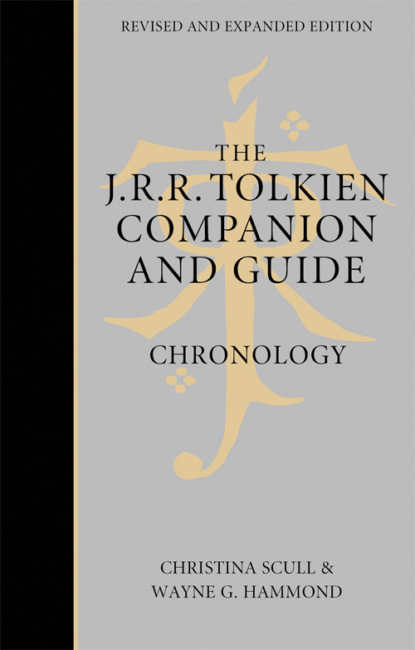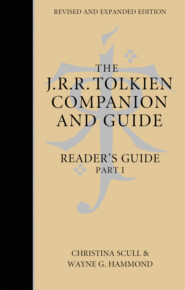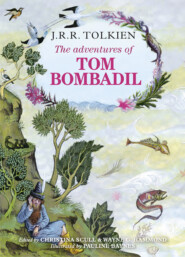По всем вопросам обращайтесь на: info@litportal.ru
(©) 2003-2024.
✖
The J. R. R. Tolkien Companion and Guide: Volume 1: Chronology
Настройки чтения
Размер шрифта
Высота строк
Поля
11 October 1937 Stanley Unwin writes to Tolkien. His son Rayner is rereading The Hobbit now that it is in print. He sends Tolkien an appreciative letter from Richard Hughes, and warns him ‘that The Hobbit has come to stay and that a large public will be clamouring next year to hear more from you about Hobbits’ (Tolkien–George Allen & Unwin archive, HarperCollins). Bumpus, the important London bookseller, has taken fifty copies on the basis of the Times review.
13 October 1937 Jane Neave is scheduled to pass through Oxford on her way to London by coach. Tolkien possibly meets her during a stop from 11.50 a.m. to 12.30 p.m. – Tolkien attends a Pembroke College meeting.
15 October 1937 Tolkien writes to Stanley Unwin, commenting on reviews of The Hobbit and the letter from Richard Hughes. He notes that no reviewer has mentioned his use of dwarves rather than dwarfs; he himself became aware of his usage only through reading reviews. He is perturbed at the idea of a sequel: he cannot think of anything more to say about hobbits, but he has a great deal to say about the world (of ‘The Silmarillion’) into which Bilbo Baggins intruded. He would like to show this material to Allen & Unwin and get an independent opinion of it. But if it is more about the hobbit that is wanted, he will start to think what can be done. He wonders if possibly such works will be successful enough to allow him to write, rather than spend vacations on examining and such things in order to pay medical and education bills, as he has done for seventeen years. ‘Writing stories in prose or verse has been stolen, often guiltily, from time already mortgaged, and has been broken and ineffective. I may perhaps now do what I much desire to do, and not fail of financial duty. Perhaps!’ (Letters, p. 24). He comments on the reception of The Hobbit in Oxford. ‘The attitude is (as I foresaw) not unmixed with surprise and a little pity. My own college [Pembroke] is I think good for about six copies, if only in order to find material for teasing me’ (Letters, p. 24). He asks if 27 October would be a suitable day for him to have lunch with Unwin. He could bring Mr. Bliss with him to get advice on how to redraw it to make it reproducible. He acknowledges the return of the specimen drawings lent to Houghton Mifflin.
19 October 1937 Stanley Unwin writes to Tolkien. He thinks that Tolkien might well hope for an income from writing. He confirms a lunch appointment for 27 October.
?20 or 27 October 1937 C.S. Lewis reads part of Out of the Silent Planet at a meeting of the Inklings.
21 October 1937 Tolkien attends an English Faculty Library Committee meeting.
23 October 1937 Tolkien writes to Stanley Unwin, confirming their lunch appointment on 27 October. He will try to start writing a sequel to The Hobbit soon, and will submit it to Rayner Unwin at the earliest opportunity. – Tolkien attends a Pembroke College meeting.
27 October 1937 Tolkien travels to London, probably on the 12.05 train, for a 12.45 lunch with Stanley Unwin. Unwin asks him to submit various writings for consideration. After their meeting Unwin makes a rough list of material that Tolkien has mentioned. These include ‘a volume of short fairy stories in various styles practically ready for publication … (Sil Marillion) [sic]’; ‘the typescript of a History of the Gnomes, and stories arising from it’; Mr. Bliss; The Lost Road, ‘a partly written novel of which we could see the opening chapters’; ‘a great deal of verse of one kind and another which would probably be worth looking at’; a translation of Beowulf ‘upon which he has as yet done very little’; and the ‘Father Christmas’ letters (Tolkien–George Allen & Unwin archive, HarperCollins). Unwin also notes that Tolkien spoke enthusiastically of The Marvellous Land of Snergs by E.A. Wyke-Smith (1927). – Tolkien had planned to travel to London this day in order to attend a lecture by Professor Joseph Vendryes at the British Academy later in the day. But he is tired, and has ‘a worrying business on mind awaiting me at 3 o’clock’ which, in the event, takes ‘so long that I only just managed to squeeze in [an appointment] in Elliott & Fry [the photographers] before my train. But, though I rather rushed them, they were very polite and expeditious, so that I hope the results will be satisfactory’ (letter to Stanley Unwin, 29 October 1937, Tolkien–George Allen & Unwin archive, HarperCollins). Tolkien has been sent to Elliott & Fry by Allen & Unwin, so that they can have photographs for publicity purposes.
28 October 1937 Stanley Unwin writes to Tolkien. He hopes that by their next meeting, on 17 November, Tolkien ‘will have put together the volume of short fairy stories in various styles. I hope you will also bring with you the History of the Gnomes and such chapters as you have written of The Lost Road’ (Tolkien–George Allen & Unwin archive, HarperCollins). He would also like to see Out of the Silent Planet by C.S. Lewis, which Tolkien apparently has mentioned.
29 October 1937 Tolkien attends an English Faculty Board meeting. He is elected to the Standing Committee on the Library, and is appointed (as convenor) to a committee ‘to consider and report on the whole question of the First Public Examination as affecting the English scheme’ (Oxford University Archives FA 4/5/1/1), together with *Helen Darbishire, C.S. Lewis, M.R. Ridley, and David Nichol Smith. The Applications Committee has appointed Tolkien the supervisor of advanced student K.R. Brooks of Merton College, who is preparing an edition of the Old English poem Andreas. – Tolkien writes to Stanley Unwin, suggesting dates in November for their next meeting. If 10 November, he would prefer the afternoon, for tea rather than lunch, so as not to miss a meeting in Oxford in the morning. 12 or 15 November would be free all day. He has seen C.S. Lewis, whose contract for Out of the Silent Planet obliges him to submit it first to the publisher J.M. Dent. – Tolkien writes again to Unwin, after receiving his letter of 28 October which suggests a meeting on Wednesday, 17 November. Tolkien can meet him on that date but ‘unless urgent matters intervene I work with Mr. Lewis each W[ednesday] morning and dine in College (my only night in the week). Mondays and Saturdays are my only days left empty (supposedly dedicated to my own study)’ (Tolkien– George Allen & Unwin archive, HarperCollins). He asks if he should borrow a copy of Out of the Silent Planet for Unwin to read, so that he would already have an opinion should Dent refuse to publish it. – J.N.L. Myres, a History scholar of Christ Church, Oxford writes to Tolkien regarding a bone object with a runic inscription found in an Anglo-Saxon cemetery at Caister-by-Norwich. The inscription is legible, but other authorities can make no sense of it.
30 October 1937 Stanley Unwin writes to Tolkien, apparently having received only his first letter of 29 October. He suggests meeting on 10, 12, or 15 November.
31 October 1937 Tolkien writes to Stanley Unwin, leaving it to him to choose between 15 or 17 November for their meeting.
1 November 1937 Stanley Unwin writes to Tolkien, setting their meeting for Monday, 15 November. He would like to see Out of the Silent Planet if there is a spare typescript Tolkien can provide.
3 November 1937 Tolkien attends a Pembroke College meeting.
5 November 1937 Tolkien writes to Stanley Unwin. He has received proofs of his photographs from Elliott & Fry. Edith has chosen one for them to send to Unwin. – F.E. Harmer, Lecturer in English at the University of Manchester, writes to Tolkien, asking if he can cite an instance of the use of (ge-)frith as an adjective in Middle English or Old English. She has sent The Hobbit to her nephews.
10 November 1937 Tolkien probably attends a meeting in Oxford this morning. – Stanley Unwin writes to Tolkien in reply to his comments about Elliott & Fry. He sends him a complimentary ticket for the Sunday Times Book Fair.
15 November 1937 Tolkien meets Stanley Unwin in London. He hands over for consideration the Lay of Leithian (recorded by Unwin as ‘Long Poem’), the Quenta Silmarillion, the Ainulindalë, the Ambarkanta, and The Fall of Númenor (which Unwin calls collectively ‘The Gnomes Material’), The Lost Road, and again, Farmer Giles of Ham and Mr. Bliss (George Allen & Unwin archive, University of Reading). They discuss the revised edition of the Clark Hall Beowulf, and Unwin explains exactly what is wanted. Tolkien shows him some of Elaine Griffiths’ work, with heavy corrections to the text. Later in the day Tolkien visits the Sunday Times Book Fair at Dorland Hall in southwest London, and will wish that he could have stayed there longer: ‘Russian books, book-cases, American juveniles, all sorts of things. As a mere author I could not escape the feeling that there are already too many (let alone the dead whose works yet live)’ (letter to Stanley Unwin, 17 November 1937, Tolkien– George Allen & Unwin archive, HarperCollins). – After this meeting Tolkien will tell Elaine Griffiths what the publisher wants regarding the Clark Hall volume.
15 November–19 December 1937 Tolkien continues to work on the Quenta Silmarillion while the fair copy manuscript is with Allen & Unwin, and probably also in the brief time between its return from the publisher and the start of composition of The Lord of the Rings. In two less carefully written and slightly overlapping manuscripts, he extends the story of the Quenta Silmarillion from the point at which Beren cuts a Silmaril from Morgoth’s crown, to the flight of Túrin from Thingol’s court. As he writes, Tolkien decides to change certain names; on 20 November he makes a note to remind himself to make these alterations in the fair copy manuscript when it returns.
16 November 1937 Since Allen & Unwin have already looked at Farmer Giles of Ham, Stanley Unwin returns the typescript to Tolkien. He comments that ‘if there were sufficient material of a like character to put with it, it would make a most excellent book’ (Tolkien–George Allen & Unwin archive, HarperCollins). – C.V. Salmon of the BBC writes to Tolkien. He would like to discuss the possibility of a broadcast programme on Beowulf, with a reading in the original Old English.
17 November 1937 Tolkien writes to Stanley Unwin. He sends a letter from a Mlle Tardivel asking about a possible French translation of The Hobbit. He has sent her an interim reply that he would pass the proposal to Allen & Unwin. He mentions that Simonne d’Ardenne has translated Farmer Giles of Ham into French and might be considered as a translator of The Hobbit. – Tolkien replies to C.V. Salmon. He would be pleased to discuss a Beowulf broadcast. If Salmon can come to Oxford, he can see him almost any day if he is not lecturing; but if they are to meet in London Mondays (especially) and Wednesdays are the most convenient for Tolkien.
c. 20 November 1937 E.V. Gordon writes to Tolkien. Like Tolkien, Kenneth Sisam also thinks that Gordon’s edition of Pearl needs cutting. Gordon will write to Sisam that as it is much easier to cut someone else’s work than to reduce one’s own, he hopes that Tolkien will be willing to prune Pearl.
20 November 1937 Stanley Unwin writes to Tolkien. Allen & Unwin are trying to arrange German, Scandinavian, and other rights for translations of The Hobbit. He will write to both Simonne d’Ardenne and Mlle Tardivel.
23 November 1937 C.V. Salmon of the BBC writes to Tolkien. He asks if Tolkien can see him in Oxford on Monday, 29 November. – Tolkien is appointed a governor of King Edward’s School, Birmingham, as the representative of Oxford University on the governing body. He will be reappointed in 1940 to act until 1947, but will resign on 1 January 1941. Although the governors meet once a month, Tolkien will attend only four meetings during his term of office.
Вы ознакомились с фрагментом книги.
Приобретайте полный текст книги у нашего партнера:
Приобретайте полный текст книги у нашего партнера:








